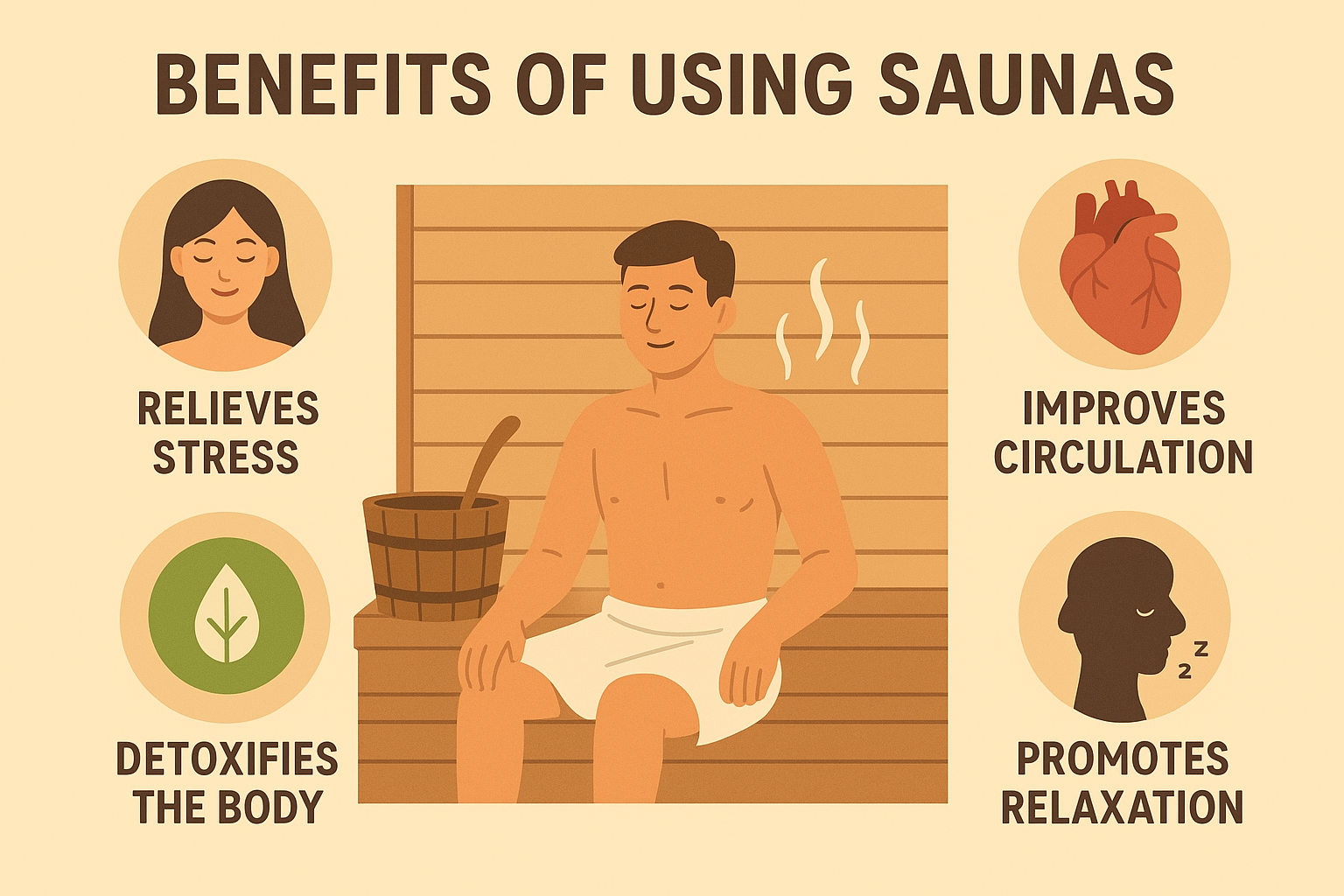
Health Benefits of Using a Sauna
Saunas aren’t just a luxury. They’re an easy way to relax, boost your health, and feel refreshed. Whether it’s a traditional or infrared sauna, the benefits go far beyond relaxation. Saunas help with detox, better sleep, and faster recovery. They’re becoming a favorite wellness tool for people of all ages. In this blog, we’ll explore the 5 Amazing Health Benefits of Using a Sauna, backed by research and simple tips you can follow.
Detoxify Your Body and Improve Skin Health
One of the most well-known benefits of sauna use is sweating out toxins. When your body heats up in a sauna, you release sweat that helps remove impurities, heavy metals, and chemicals from your system.
Skin Benefits: Regular sauna sessions can help improve skin clarity, reduce acne, and give your skin a healthy, natural glow. The increased blood flow also nourishes skin cells and promotes repair.
Practical Tip: Always drink water before and after a sauna session to stay hydrated. Finishing with a cool shower can help tighten pores and lock in the benefits.
Extra Boost: Add a gentle exfoliation or essential oils like eucalyptus or lavender for added skin care benefits.
Boost Circulation and Heart Health
Using a sauna can improve your blood circulation and support heart health. The heat causes your blood vessels to dilate, which increases blood flow and oxygen delivery throughout your body. Regular sauna use can also support longevity and promote healthy aging by lowering the risk of chronic diseases
Heart Benefits: Studies suggest that regular sauna use can lower blood pressure and reduce the risk of cardiovascular disease. This makes it a simple way to support heart health naturally.
Practical Tip: Beginners should start with 10–15 minutes per session. Over time, gradually increase to 20–30 minutes, depending on your comfort level.
Extra Idea: Pair your sauna session with light stretching to improve circulation and flexibility further.
Muscle Recovery and Post-Workout Relief
If you exercise regularly, a sauna can be your natural recovery tool. The heat helps relax tight muscles, reduce inflammation, and speed up recovery after workouts.
Infrared Saunas: Infrared saunas penetrate deeper into muscles and tissues, which may help relieve soreness faster than traditional saunas.
Practical Tip: After a workout, wait 15–20 minutes, hydrate, then enjoy a 20–30 minute sauna session. It can help reduce delayed-onset muscle soreness (DOMS).
Extra Boost: Combining a sauna with contrast therapy (alternating hot and cold) can further enhance recovery.
Stress Relief and Mental Wellness
Saunas are excellent for reducing stress and boosting mental clarity. The heat stimulates the release of endorphins, which are your body’s natural “feel-good” hormones, while lowering cortisol, the stress hormone.
Better Sleep: Many users report improved sleep quality after regular sauna sessions because the body and mind are deeply relaxed.
Mental Clarity: Spending time in a quiet sauna, away from screens and distractions, can boost focus, creativity, and overall mood.
Practical Tip: Try light meditation, deep breathing, or calming music during your sauna session to maximize mental benefits.
Support Weight Loss and Boost Metabolism
While saunas aren’t a replacement for exercise, they can aid in weight management by increasing calorie burn and stimulating metabolism.
Calorie Burn: A 30-minute session in a traditional sauna can burn 100–150 calories, while infrared saunas may slightly increase this number due to deeper tissue penetration.
Metabolism Boost: Heat increases heart rate and circulation, giving your metabolism a small temporary boost.
Practical Tip: Combine sauna use with regular workouts and a balanced diet for the best results. Drink plenty of water before and after your session.
Tips for Safe Sauna Use
Hydrate Well: Always drink water before, during, and after your session.
Start Slowly: If you’re new, begin with 10–15 minutes per session. Gradually increase to 20–30 minutes.
Temperature Guidelines: Traditional saunas: 150–195°F. Infrared saunas: 110–140°F.
Listen to Your Body: If you feel dizzy, faint, or unwell, exit the sauna immediately.
Frequency: 2–4 sessions per week is enough for most people.
Choosing the Right Sauna
Traditional Sauna: Uses dry or steam heat, high temperatures, classic experience.
Infrared Sauna: Uses infrared light to heat your body directly at lower temperatures, penetrates deeper into tissues.
Portable Saunas: Compact, affordable, and ideal for small spaces or apartments.
Conclusion
Saunas offer amazing benefits for your body and mind. Regular sauna use can improve circulation, aid muscle recovery, support skin health, reduce stress, and even assist in weight management. Whether you choose a traditional, infrared, or portable sauna, adding this wellness tool to your routine can boost overall health and relaxation.
If you’re ready to create a home spa experience, explore infrared saunas, traditional saunas, and accessories to enjoy these benefits at home



